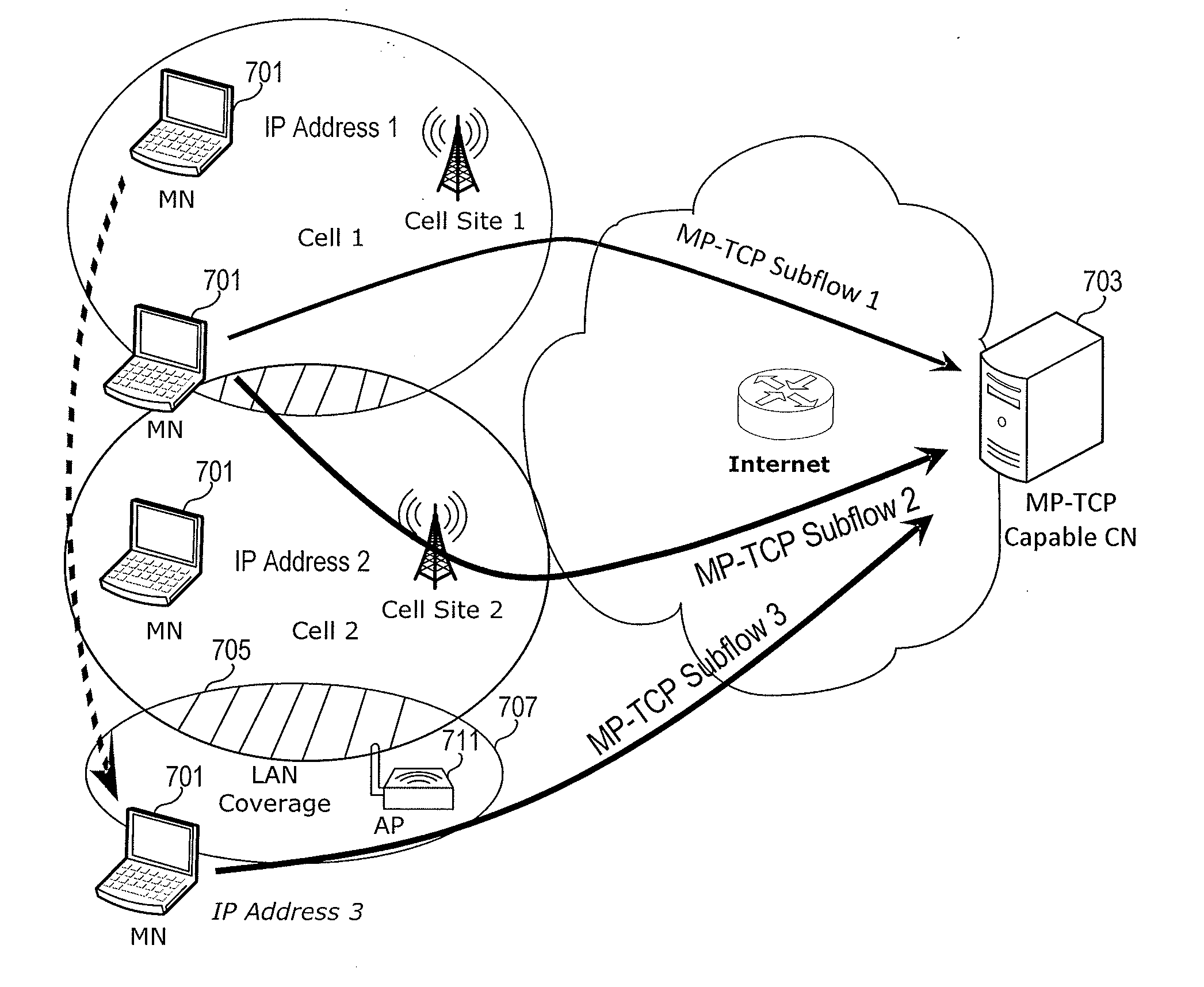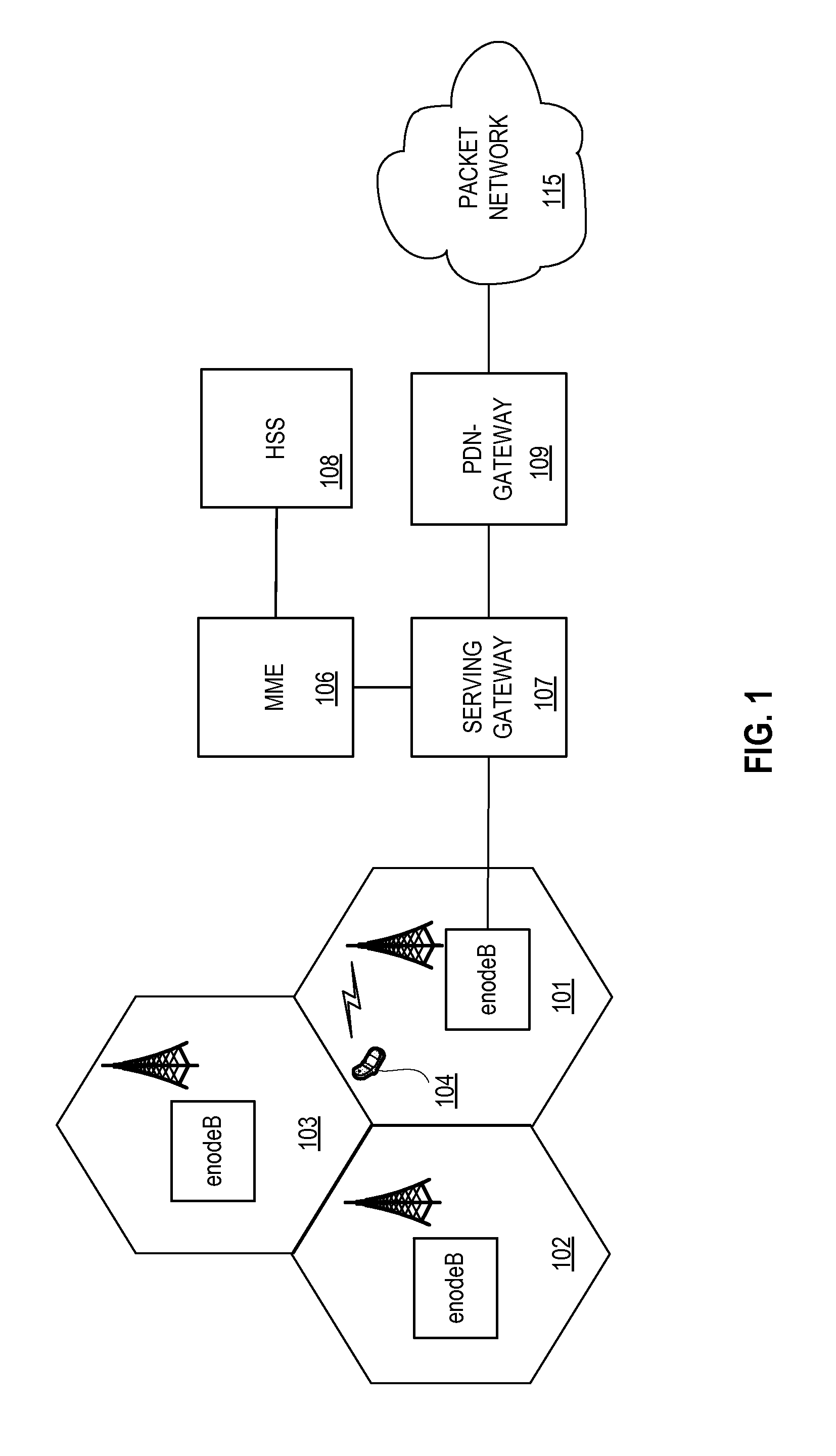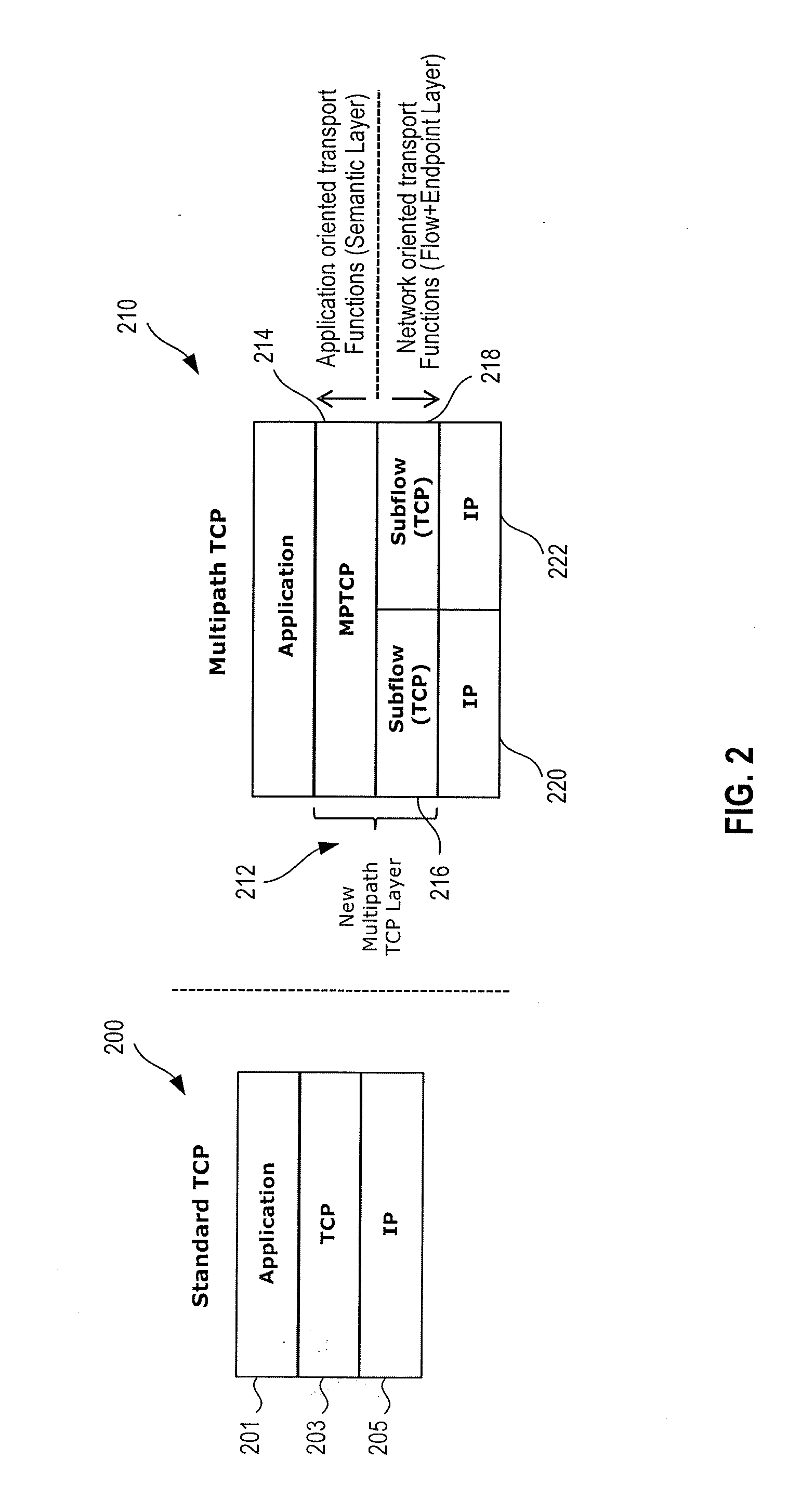Mobility Management of Wireless Networks Based on Multipath Transfer Control Protocol
a wireless network and multi-path transfer technology, applied in the field of multi-path transfer control protocol for wireless network mobility management, can solve the problems of inability to scale well with billions of emerging internet connected devices, large amount of network equipment required, and difficult to evolve separately and interwork with other radio access technologies (rats)
- Summary
- Abstract
- Description
- Claims
- Application Information
AI Technical Summary
Benefits of technology
Problems solved by technology
Method used
Image
Examples
Embodiment Construction
[0007]In one embodiment a method includes establishing a first multipath-transfer control protocol (MP-TCP) subflow to a corresponding node from a mobile device using a first internet protocol (IP) address corresponding to the mobile device in a first coverage area served by first cell site equipment. The mobile device establishes a second MP-TCP subflow using a second IP address corresponding to the mobile device while the mobile device is in an overlapped coverage area including a first portion of the first coverage area and a second portion of a second coverage area served by second cell site equipment.
[0008]In another embodiment a mobile device includes multipath transfer control protocol (MP-TCP) processing logic responsive to a request for a TCP-IP connection to establish a first multipath-transfer control protocol (MP-TCP) subflow to a corresponding node using a first IP address associated with first cell site equipment while the mobile device is in a first coverage area serv...
PUM
 Login to View More
Login to View More Abstract
Description
Claims
Application Information
 Login to View More
Login to View More - R&D
- Intellectual Property
- Life Sciences
- Materials
- Tech Scout
- Unparalleled Data Quality
- Higher Quality Content
- 60% Fewer Hallucinations
Browse by: Latest US Patents, China's latest patents, Technical Efficacy Thesaurus, Application Domain, Technology Topic, Popular Technical Reports.
© 2025 PatSnap. All rights reserved.Legal|Privacy policy|Modern Slavery Act Transparency Statement|Sitemap|About US| Contact US: help@patsnap.com



